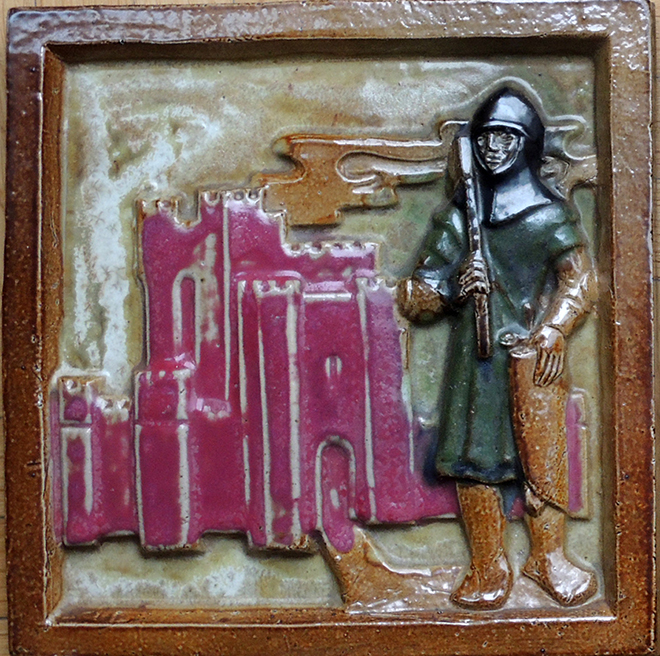
© Roberto Pozzo
The Pozzo Collection shows a wide selection of tiles from all of the most important factories producing wall tiles in Belgium. The collection contains tiles produced at low cost thanks to innovative printing techniques as well as some absolute jewels of Art Nouveau. The tiles in the collection are mainly earthenware, although Roberto Pozzo has also collected pottery and stoneware tiles.
The first industrially-produced ceramic tiles
The technique of dust pressing opened up new horizons in the tile industry. This involved using a screw press to compress, at high pressure, low humidity clay powder into a metal mould held between two plates of steel. It was this technique that enabled large-scale tile production to be launched in the 1840s and, thanks to dust pressing, an experienced professional could produce more than a thousand tiles per day.
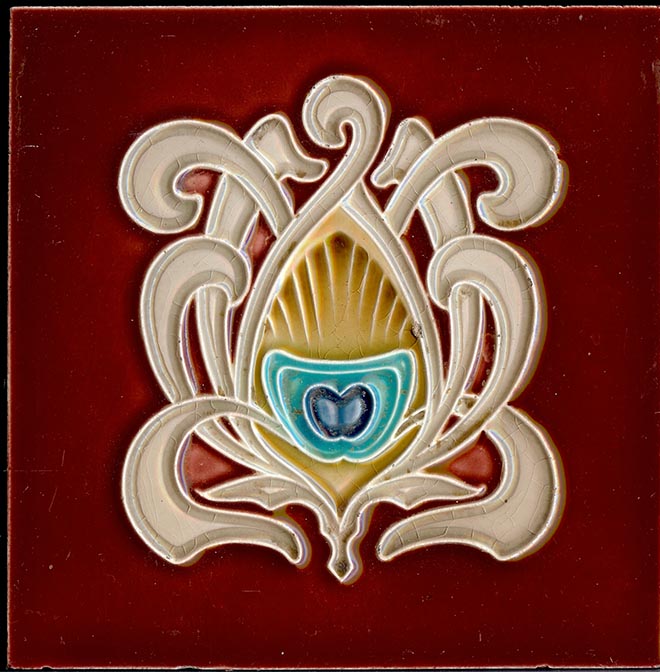
© Roberto Pozzo
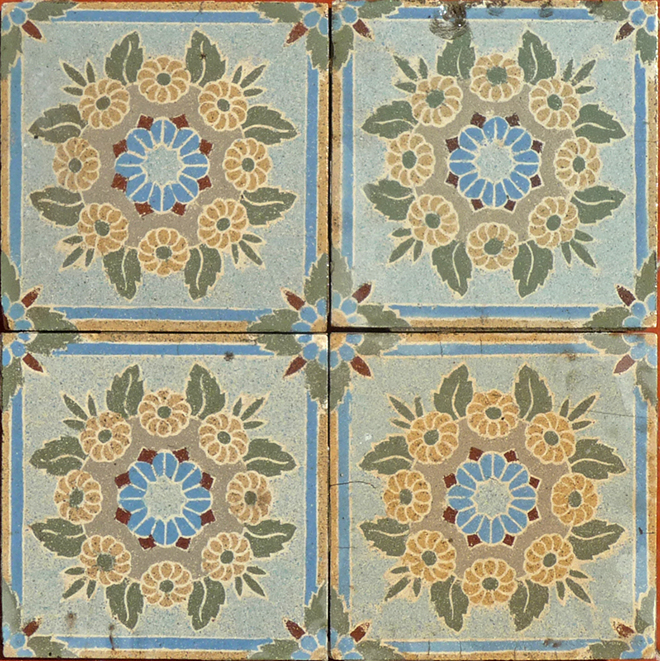
© Roberto Pozzo
Moulded floor tiles
From the 1860s, it was encaustic floor tiles, coloured in the mass, which conquered the international market. Up until the Second World War, cement tiles, which were cheaper, and stoneware tiles were two highly successful Belgian products, largely due to their excellent value for money.
Weather-resistant stoneware wall tiles
After the discovery during the 1880s of stoneware wall tiles capable of resisting bad weather, these became as popular for outdoor applications as for interior use. The magnificent industrial wall tiles used in Art Nouveau architecture are typical, decorated with flowers and elegant leaves and branches, often with highly charged symbolism. In interiors, on floors and walls, mass-produced tiles were most often used, whilst on facades and porches one could admire unique, tailor-made panels of tiles.
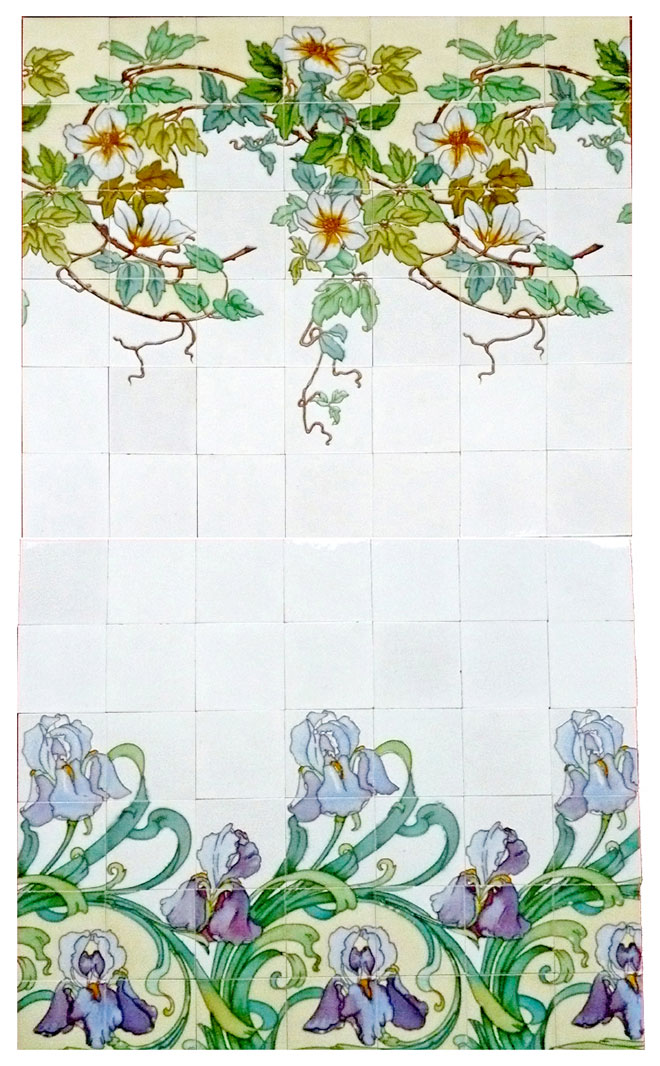
© Roberto Pozzo
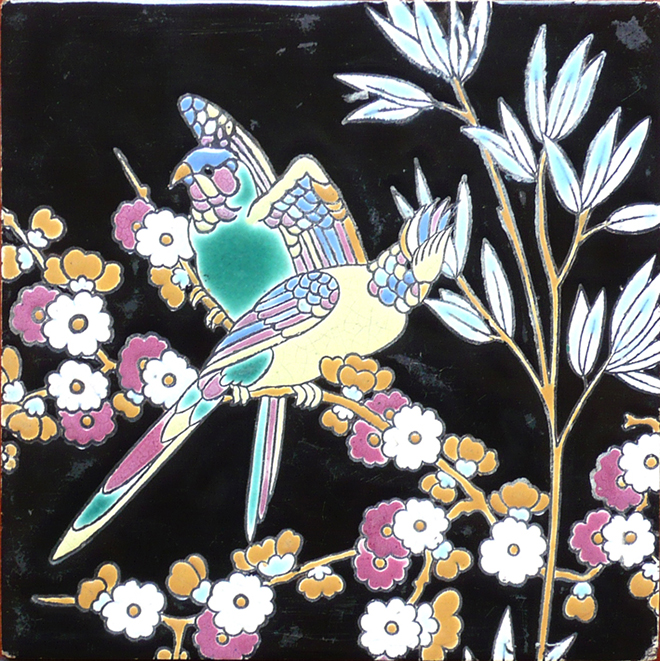
© Roberto Pozzo
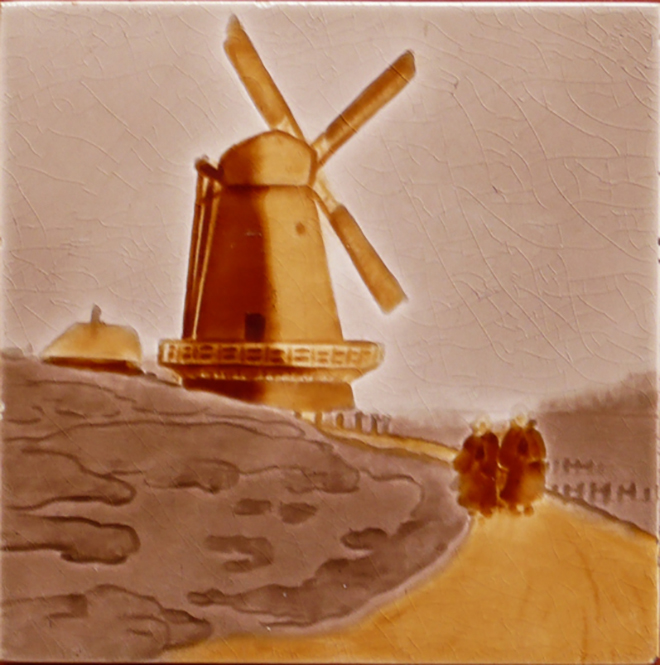
© Roberto Pozzo
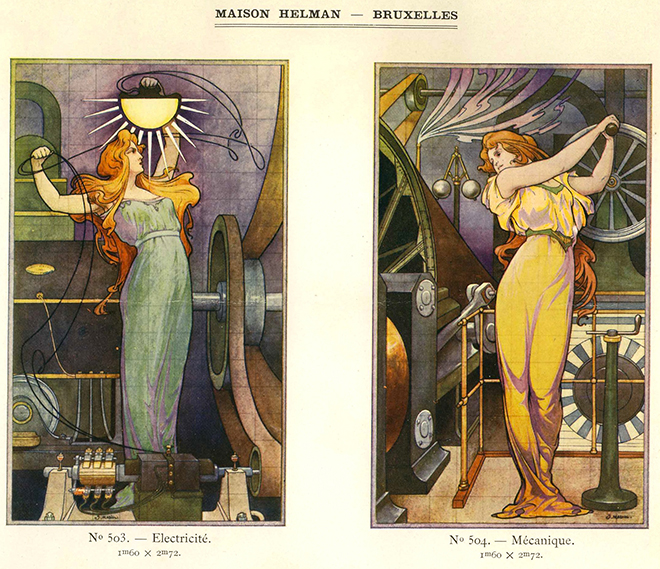
© Mario Baeck
A range of techniques
From the middle of the 19th century, the wall tile industry witnessed a real boom. In addition to motifs derived from the traditional Dutch blue and white Delftware designs as well as neo-classical, neo-Gothic and neo-Renaissance motifs, there were also tiles with naturalist representations of flowers, fruits, birds and animals, romantic scenes, landscapes and urban scenes.
The Pozzo Collection has superb examples of every possible decoration technique, including transfer printing, lithography, serigraphy, aerography, linear relief, low- and high-relief, intaglio and hand-painted tiles.
Tile factories had their own design studios, although for tiled panels and wainscoting, they also commissioned external artists, architects, furniture designers, sculptors, designers, painters and poster artists. This direct implication of famous artists explains the excellent quality of many of the tile realisations from the Art Nouveau period. There are tiles known to have been created by architects such as Paul Hankar, Henry van de Velde, Alban Chambon and Albert Van huffel, as well as painters including Georges Lemmen, Alfred William Foch, Fernand Toussaint, Jacques Madiol, Alexandre-Auguste Hannotiau and Georges De Geetere. Poster artists such as Georges Gaudy and engravers such as Adolphe Leonard De Mol also created tiles. Ceramic applications destined for use in building were an integral part of the Art Nouveau artistic discourse.